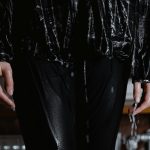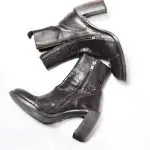You might think that simply washing your feet is enough to prevent athlete’s foot, but moisture plays a much bigger role than you realize. When your feet stay damp, fungi find the perfect environment to grow and cause infections. That’s where moisture-wicking fabrics come in—they don’t just keep you comfortable; they actively help reduce the risk of fungal issues. Understanding how these fabrics work can change the way you protect your skin.
Table of Contents
Key Takeaways
- Moisture-wicking fabrics pull sweat away from skin, keeping feet dry and reducing fungal growth conditions.
- By preventing dampness, moisture-wicking materials lower the risk of athlete’s foot and other fungal infections.
- These fabrics reduce skin irritation and chafing, promoting healthier skin less prone to infections.
- Combining moisture-wicking with antimicrobial treatments enhances protection against fungi and odor-causing microbes.
- Moisture control through wicking supports effective antifungal medication by keeping skin dry and infection-free.
Understanding Moisture-Wicking Fabrics and Their Benefits
Although moisture-wicking fabrics might seem like just another clothing feature, they play an essential role in keeping you dry and comfortable. This fabric technology actively pulls sweat away from your skin, moving moisture to the fabric’s surface where it evaporates quickly.
Unlike traditional materials that trap sweat, moisture-wicking fabrics provide superior moisture control, reducing dampness and stickiness. When you wear these garments, you’ll notice less chafing and irritation, making them perfect for workouts or daily wear.
How Moisture Contributes to Fungal Infections
Keeping your skin dry with moisture-wicking fabrics does more than just boost comfort—it also plays a vital role in preventing fungal infections.
When your skin stays wet or damp, moisture retention creates the perfect environment for fungal growth. Fungi thrive in warm, moist areas, so if sweat or water lingers on your skin, it encourages these microorganisms to multiply rapidly.
This can lead to infections like athlete’s foot, which often start in areas where moisture accumulates, such as between your toes. By reducing moisture retention, moisture-wicking fabrics help limit the conditions fungi need to grow.
The Importance of Hygiene in Fungal Infection Prevention
You can prevent fungal infections by keeping your feet clean and dry, changing your socks regularly, and trimming your nails properly.
These simple hygiene habits reduce moisture and limit fungal growth.
Stick to these practices to keep your skin healthy and infection-free.
Foot Hygiene Practices
Since your feet are often confined in warm, moist environments, maintaining proper foot hygiene plays an essential role in preventing fungal infections.
You should regularly clean your feet with mild soap and water, making sure to dry them thoroughly, especially between the toes. Incorporating foot exfoliation into your routine helps remove dead skin cells, reducing places where fungi can thrive.
After cleansing and exfoliating, apply daily moisturizing to keep your skin healthy and prevent cracks where infections might start. Avoid overly greasy creams that can trap moisture; instead, choose lightweight, breathable formulations.
Regular Sock Changes
Proper foot hygiene goes beyond washing and moisturizing; changing your socks regularly plays a key role in preventing fungal infections.
Maintaining good sock hygiene helps keep your feet dry and reduces the chance of fungal growth. You should adopt a habit of regular laundering and sock changes, especially if your feet sweat a lot or you wear closed shoes for extended periods.
Here’s what you can do:
- Change socks at least once daily or more if they become damp
- Choose moisture-wicking socks to keep feet dry
- Wash socks thoroughly using hot water to eliminate fungi
- Rotate socks to allow each pair to dry completely before wearing again
Nail Care Tips
Although many focus on foot hygiene, neglecting nail care can leave you vulnerable to fungal infections. Keeping your nails properly trimmed is essential because long or jagged nails can trap moisture and dirt, creating a breeding ground for fungi.
Make sure you trim your nails straight across to prevent ingrown nails, which can also lead to infection. Don’t overlook cuticle care; gently pushing back cuticles and keeping them moisturized helps maintain a strong barrier against pathogens.
Avoid cutting or damaging your cuticles, as this can open the door for fungal invasion. By incorporating regular nail trimming and proper cuticle care into your routine, you reduce the risk of fungal infections and support overall foot health.
Antimicrobial Materials and Their Role in Fighting Fungi
You’ll find that materials infused with silver offer powerful antimicrobial properties that help keep fungi at bay.
Combining moisture-wicking fabrics with these antimicrobials enhances protection by reducing the damp environment fungi need to thrive.
This broad-spectrum approach can greatly lower your risk of fungal infections.
Silver’s Antimicrobial Properties
Silver stands out as a powerful antimicrobial agent that’s increasingly used in moisture-wicking fabrics to combat fungal infections. You’ll find that silver nanoparticles provide excellent antimicrobial efficacy by disrupting fungal cells and preventing their growth.
When integrated into textiles, silver actively fights fungi like those causing athlete’s foot. Here’s why silver is a game-changer for your moisture-wicking gear:
- Silver nanoparticles release ions that interfere with fungal cell functions
- It offers long-lasting antimicrobial protection without harmful chemicals
- Silver-treated fabrics reduce odor-causing microbes alongside fungi
- It maintains breathability and comfort while keeping your skin dry and safe
Moisture-Wicking Plus Antimicrobials
When you combine moisture-wicking fabrics with antimicrobial materials, you create a powerful defense against fungal infections.
This combination maintains moisture balance by drawing sweat away from your skin while antimicrobial agents actively inhibit fungal growth. You benefit from antimicrobial synergy, where the fabric’s ability to keep your skin dry complements the antimicrobial’s capacity to kill or suppress fungi.
This dual action helps reduce the warm, damp environments fungi thrive in, making it harder for infections like athlete’s foot to develop.
Choosing clothing or footwear with both moisture-wicking and antimicrobial properties means you’re not just managing sweat—you’re actively preventing fungal colonization.
This integrated approach offers a proactive way to keep your feet and skin healthier during physical activities or daily wear.
Broad-Spectrum Fungal Protection
Although moisture-wicking fabrics keep your skin dry, antimicrobial materials take fungal defense a step further by actively targeting a wide range of fungi.
These broad spectrum antifungal agents embedded in textiles disrupt fungal growth, offering superior protection against infections like athlete’s foot. When you choose clothing or footwear with these materials, you’re benefiting from advanced fungal resistance strategies that go beyond moisture control.
Here’s what broad-spectrum fungal protection provides:
- Inhibits various fungi, including dermatophytes and yeasts
- Reduces odor-causing microbial buildup
- Enhances long-term durability of fabrics against fungal colonization
- Supports skin health by minimizing infection risk
Preventing Intertrigo With Moisture Control
Since moisture creates the ideal environment for intertrigo to develop, you’ll want to keep skin folds dry and well-ventilated. Effective intertrigo prevention focuses on maintaining a strong skin barrier by controlling moisture buildup. Using moisture-wicking fabrics can help you stay dry, reducing friction and irritation in vulnerable areas.
| Moisture Control Tips | Benefits |
|---|---|
| Wear breathable fabrics | Enhances air circulation |
| Use absorbent powders | Keeps skin dry |
| Change damp clothing | Prevents prolonged moisture |
Enhancing Skin Health Through Effective Moisture Management
To enhance your skin health, you need to manage moisture effectively, balancing hydration without allowing excess dampness.
Proper skin hydration supports your skin’s natural barrier, reducing fungal resilience and preventing infections like athlete’s foot.
You can improve moisture management by:
- Wearing moisture-wicking fabrics to keep skin dry
- Applying lightweight, breathable moisturizers that lock in hydration
- Regularly drying areas prone to sweat and dampness
- Avoiding prolonged exposure to wet environments
Combining Moisture-Wicking Fabrics With Treatment for Optimal Results
Managing moisture well sets the foundation for preventing fungal infections, but combining moisture-wicking fabrics with targeted treatments gives you the best chance at keeping your skin healthy.
Moisture control alone reduces the environment where fungi thrive, but pairing it with antifungal creams or sprays creates treatment synergy that accelerates healing and prevents recurrence.
When you wear moisture-wicking socks or clothing, sweat and dampness move away from your skin, allowing treatments to penetrate more effectively.
This combo not only keeps your skin dry but also enhances the medication’s impact.
To optimize results, apply treatment as directed and choose moisture-wicking fabrics suited to your activity level.
Together, these strategies form a powerful defense against fungal infections like athlete’s foot.
Frequently Asked Questions
Can Moisture-Wicking Fabrics Be Used for Fungal Infections on the Scalp?
Oh sure, just wrap your scalp in moisture-wicking fabrics and expect scalp treatments to vanish! You shouldn’t rely solely on fabrics for fungal prevention; proper scalp treatments and hygiene are key to truly tackling scalp fungal infections.
Are Moisture-Wicking Socks Effective for Diabetes-Related Foot Care?
You’ll find moisture-wicking socks helpful for diabetes management by keeping your feet dry and supporting good foot hygiene. They reduce moisture buildup, lowering infection risks and promoting healthier skin, which is essential for diabetic foot care.
How Do Moisture-Wicking Fabrics Compare in Cost to Regular Fabrics?
Did you know moisture-wicking fabrics can cost 20-30% more than regular ones? When you compare cost, remember their superior fabric durability often saves you money long-term despite the initial price difference.
Can Moisture-Wicking Clothing Cause Skin Dryness or Irritation?
Moisture-wicking clothing reduces moisture absorption, but if you have sensitive skin, it might cause dryness or irritation. You’ll want to choose soft, breathable fabrics and monitor your skin’s reaction to avoid discomfort.
Are There Specific Brands Recommended for Moisture-Wicking Antifungal Clothing?
Imagine you’re comparing brand technologies; brands like Under Armour use advanced fabric tech to wick moisture effectively. When doing brand comparisons, focus on fabric technologies that combine moisture-wicking with antifungal properties for best results.
- Tetron Fabric for Marine Applications: Durability and Use Cases - June 18, 2025
- Tetron Fabric for Outdoor Furniture: Weather Resistance and Care - June 18, 2025
- Tetron Fabric for Wall Coverings: Style and Application Tips - June 18, 2025






![Best Moisture-Wicking Socks for [Running/Hiking/Everyday]: Stop Sweaty Feet sweat free foot comfort](https://knowingfabric.com/wp-content/uploads/2025/06/sweat_free_foot_comfort_a2jxe-150x150.jpg)
